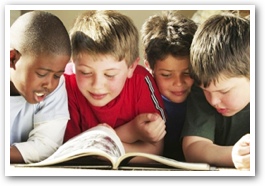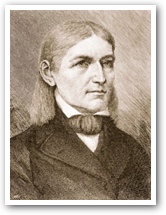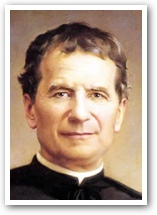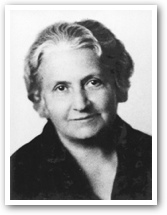Child-centred education
- STRATFORD CALDECOTT
Insight into the true value of the child can be traced back to Christ, though it has to be said it remained mainly implicit during most of the succeeding centuries.
 Before the eighteenth century childhood was often considered merely a stage of weakness and immaturity to be got through as quickly as possible. Accordingly, modern child-centered education tends to trace its origins back only to the Romantic movement, and Jean-Jacques Rousseau (d. 1778) in particular. Rousseau himself – not a great educator, but a considerable influence on educational thought through his novel Emile – believed in the natural goodness and value of the child, wanted education to be adapted to each new developmental stage, and placed great emphasis on the importance of the child's activity or active involvement in the process. We can trace his influence through several of the best-known educationalists of the succeeding centuries – though we can also see on all sides the bad fruits of an educational approach that centred itself so exclusively on the child that the tradition of Western civilization began to founder and be lost. Let us examine some representative figures, and what can be learned from them.
Before the eighteenth century childhood was often considered merely a stage of weakness and immaturity to be got through as quickly as possible. Accordingly, modern child-centered education tends to trace its origins back only to the Romantic movement, and Jean-Jacques Rousseau (d. 1778) in particular. Rousseau himself – not a great educator, but a considerable influence on educational thought through his novel Emile – believed in the natural goodness and value of the child, wanted education to be adapted to each new developmental stage, and placed great emphasis on the importance of the child's activity or active involvement in the process. We can trace his influence through several of the best-known educationalists of the succeeding centuries – though we can also see on all sides the bad fruits of an educational approach that centred itself so exclusively on the child that the tradition of Western civilization began to founder and be lost. Let us examine some representative figures, and what can be learned from them.
![]()
 |
|
Friedrich Froebel
|
A century after Rousseau, Friedrich Froebel (d. 1852) is best known for the kindergarten, which was conceived as the centre of an interactive educational process based around the activity of the young child. For Froebel, the "game" is the typical form of life in childhood, and play is the key to education, capable of laying solid foundations for the adult personality. He once said that "Play is the highest expression of human development in childhood, for it alone is the free expression of what is in a child's soul." Children in the kindergarten would typically learn through song, dance, gardening and the use of geometrical and other patterned blocks and toys – known as the Froebel "Gifts". These represent the basic building blocks of the universe and the symmetry of the child's own soul.
The Froebel Educational Institute lists the main elements of Froebel's approach as follows. Their influence on much modern educational practice is obvious.
1. Principles include
• recognition of the uniqueness of each child's capacity and potential
• an holistic view of each child's development
• recognition of the importance of play as a central integrating element in a child's
development and learning
• an ecological view of humankind in the natural world
• recognition of the integrity of childhood in its own right
• recognition of the child as part of a family and a community.
2. Pedagogy involves
• knowledgeable and appropriately qualified early childhood professionals
• skilled and informed observation of children, to support effective development, learning and
teaching
• awareness that education relates to all capabilities of each child: imaginative, creative,
symbolic, linguistic, mathematical, musical, aesthetic, scientific, physical, social,
moral, cultural and spiritual
• parents/carers and educators working in harmony and partnership
• first-hand experience, play, talk and reflection
• activities and experiences that have sense, purpose and meaning to the child, and involve
joy, wonder, concentration, unity and satisfaction
• holistic approach to learning which recognises children as active, feeling and thinking human
beings, seeing patterns and making connections
• encouragement rather than punishment
• individual and collaborative activity and play
• an approach to learning which develops children's autonomy and self confidence.
![]()
 |
|
Don Bosco
|
Whereas Rousseau was a freethinker and Froebel from a Lutheran background, Don Bosco (d. 1888) was a priest and became a Catholic saint. His approach was akin to theirs in some ways, and yet also rather different. Loving children very much, he was more concerned than Rousseau with their fragility and moral danger, and his educational philosophy was intended to produce "good Christians and honest citizens" – good citizens on earth in order to become good citizens in heaven. Nature and grace are not opposed, but interpenetrate for the sake of a final goal that could be called the supernatural fulfillment of the natural. Education must therefore serve the supernatural dignity and destiny of the child, allowing it to blossom in the social dimension.
Bosco rejected the repressive approach to education in favour of a preventive approach based on friendship, appealing directly to the heart and to the innate desire for God ("reason, religion and loving-kindness" was one formulation, "cheerfulness, study, and piety" another). His pedagogy made use of music, theatre, comedy, walks and excursions. Though this approach is still "child-centred", it places a great responsibility on the person of the educator, since the young person is not expected to flourish naturally in this world without a relationship that offers personal attention and genuine love. But in this context, if such a relationship can be established, grace is able to flow and the development of reasonableness, imagination, empathy and conscience is much more secure. It is a kind of partnership.
![]()
 |
|
Rudolf Steiner
|
Another great figure in child-centred education is Rudolf Steiner (d. 1925), the founder of a school of spiritual philosophy called Anthroposophy and the inspiration for around 1000 Waldorf Schools around the world. The schools began in 1919 when Steiner was invited to create one for the children of workers at the Waldorf-Astoria cigarette factory, based on the ideas in his 1909 book, The Education of the Child. Steiner believed in the need to educate with the spiritual as well as emotional, cultural and physical needs of children in mind, and believed that they progress through a series of developmental stages corresponding to the evolution of human consciousness itself. Abstract and conceptual thinking develops late, around the age of 14, and so the early years are more focused on art, the imagination and feeling. Subjects tend to be presented in a pictorial way, usually involving music, rhythm, routine and repetition (exposure to television and computers is minimized). The system relies on a strong relationship with a Class Teacher who normally stays with the same children from ages 7 till 14. Prior to that, the children attend a kindergarten where child-led play alternates with teacher-led activities in a carefully structured environment. The Upper School curriculum fosters independent thinking and is taught by specialist teachers.
Waldorf Schools are run collegially rather than by a Head Teacher, and assessment is by the teachers' observation of the children in their care rather than by formal examination. The children are helped to compile their own lesson books by hand in the Lower School, which prepares them for independent note-taking in the later phase. In general, this holistic approach seems to work – children are happy and sociable, and academic standards are often judged to be higher than in conventional mainstream schools.
![]()
 |
|
Maria Montessori
|
The Italian doctor, Maria Montessori (d. 1952), developed her ideas around the same time as Steiner – by 1907, in fact, she thought she had discovered the true "normal" nature of the child by working with the disabled, and her work subsequently was to create an environment in which children (especially young children, up to the age of 6) could direct and pursue their own learning. The normalization of the child took place through a state of deep concentration, evoked by some task of the child's own choosing. The younger child has an immense capacity to absorb experiences and concepts which become foundations of the later personality, and a particular sensitivity to music, although abstract reasoning only develops later. The curriculum in a typical Montessori school or play-group is not pre-set, but consists in a series of challenges introduced by the teacher when the child seems ready for them.
Other examples of child-centred pedagogy might be mentioned, but the basic principle is clear. After observing children with loving attention, each of these educators came to certain conclusions about the nature of the child and the developmental stages that need to be taken into account. Each tried to devise an environment in which the child's natural question for beauty, goodness and truth might be pursued and facilitated. There are of course many differences in the exact delineation of the stages, but the rough pattern is similar in each case. The basis for a good education is a certain trust in the self-motivation of the child, combined with a reliance on the creativity, responsiveness and love of the teacher, who sets the terms for the learning environment and allows the child to flourish.
The Child I Used to Be
We all know there is a child still within us. That child has many aspects. It is ignorant, selfish, immature, confused. It may be desperately in need of love it has never received. But it is innocent and pure. I think it was in that sense that Georges Bernanos wrote, "What does my life matter? I just want it to be faithful, to the end, to the child I used to be."
Christianity has given a particular importance to childhood. It certainly transformed, over time, the way children were perceived in classical civilizations. From the statement of Christ, "Whoever does not receive the kingdom of God like a child shall not enter it" (Mk 10:15), it followed that there was something valuable and to be imitated in the state of childhood. Normally, throughout human history, children were told to grow up and become like adults, not the other way around. Childhood is an undeveloped stage, but in some ways it also represents a more perfect state, when we can see more completely what it is simply to be human. Until Mary Immaculate, no one had lived that human existence perfectly, but in her and in her newborn Child we see what it is to receive one's being straight from the hand of God and to show forth what it is to be loved and to love.
This is not to romanticize or idealize childhood, but to understand it in the light of a new fact: the Incarnation of the second person of the divine Trinity. God has a Son. We are made in God's image. The child from its first moment is the paradigm for the image of God, as well as a revelation of the meaning of being – its meaning as pure gift. This primordial meaning of the child is present even in fallen man, but clouded over and confused as time goes by and as the child grows.
The great educators have learned to appreciate the various stages of childhood and adolescence as the unfolding of human potential. Howard Gardner's theory of "multiple intelligences" was welcomed by many teachers (if not by most psychologists) because it seemed to confirm their experience of the multi-faceted nature of that potential, and gave them a vocabulary in which to discuss it. But intelligence, even in the plural, needs to be integrated within a broader theory of the human person as the manifestation of Being.
The first priority of the Catholic school must be to preserve and nurture the spirit of childhood in this sense – to preserve and help to restore (through the sacraments, especially the sacrament of confession and worthy reception of the Eucharist) the purity that alone enables us to "see God" (Matt. 5:8).
The child who has not yet sinned – or in the case of Mary and Jesus, the child who never sins – lives partly in eternity even while on earth; he has the fragrance of eternity around him. Purity is the reason childhood is so fascinating. To be pure is to be simple, in the sense of undivided. Impurity involves a loss of integrity, of integration; it is a dissonance, a crack in the mirror of the soul. (Every sin sets part of me against the rest.) The pure gaze of innocence is one that does not secretly look for what can be got out of something or someone. It sees things as they are in their own right. The energy behind the gaze is not diverted by a variety of passions. When a baby wants something, it wants that thing completely. Thus the child lives each moment more intensely than those who have grown old in sin. His eyes are clearer, his ears keener, his energy stronger. He lives in a wider universe, one that seems to go on forever, for he has not had the experience of many winters and summers, and of the flickering parade birthdays coming and going through the years. He has no yardstick against which to measure his life. This intensity of experience is partly a function of the way memory and imagination work. It is the memory of time that makes us old; remembering eternity makes us young again.
The first priority of the Catholic school must be to preserve and nurture the spirit of childhood in this sense – to preserve and help to restore (through the sacraments, especially the sacrament of confession and worthy reception of the Eucharist) the purity that alone enables us to "see God" (Matt. 5:8). The rules of morality are not there primarily for the sake of social order, tradition or convention; they exist for the sake of the order of the soul, its spiritual development and happiness. Yet an overly moralistic approach would be counter-productive. Not only can we not rely on rules and the policing of corridors for the preservation of purity and the development of conscience, these are not even the best way to begin. The soul needs love, as the positive force around which all its powers will congregate. It needs a degree of tenderness, if it is to flourish without fear. It needs attention, in the sense that others – the teacher especially – must listen to it and be receptive to what it has to offer, if it is to discover for itself what that is.
 This is Meaghen Gonzalez, Editor of CERC. I hope you appreciated this piece. We curate these articles especially for believers like you.
This is Meaghen Gonzalez, Editor of CERC. I hope you appreciated this piece. We curate these articles especially for believers like you.
Please show your appreciation by making a $3 donation. CERC is entirely reader supported.

Acknowledgement
 Stratford Caldecott, "Centering Education on the Child." Beauty for Truth's Sake blog (February, 2011).
Stratford Caldecott, "Centering Education on the Child." Beauty for Truth's Sake blog (February, 2011).
This article is taken from a work in progress, a book specifically on the Trivium.
Reprinted with permission of Stratford Caldecott.
The Author

 Stratford Caldecott (1953-2014) was the editor of Second Spring and of Humanum Review (for the John Paul II Institute in Washington, DC) as well as the Director of the Centre for Faith & Culture in Oxford, England. A Fellow of St. Benet's Hall, Oxford, he is the author of Beauty for Truth's Sake: On the Re-enchantment of Education and The Seven Sacraments: Entering the Mysteries of God, Secret Fire: The Spiritual Vision of J.R.R.Tolkien, Catholic Social Teaching, The Power of the Ring: The Spiritual Vision Behind the Lord of the Rings, and Beyond the Prosaic: Renewing the Liturgical Movement.
Stratford Caldecott (1953-2014) was the editor of Second Spring and of Humanum Review (for the John Paul II Institute in Washington, DC) as well as the Director of the Centre for Faith & Culture in Oxford, England. A Fellow of St. Benet's Hall, Oxford, he is the author of Beauty for Truth's Sake: On the Re-enchantment of Education and The Seven Sacraments: Entering the Mysteries of God, Secret Fire: The Spiritual Vision of J.R.R.Tolkien, Catholic Social Teaching, The Power of the Ring: The Spiritual Vision Behind the Lord of the Rings, and Beyond the Prosaic: Renewing the Liturgical Movement.




